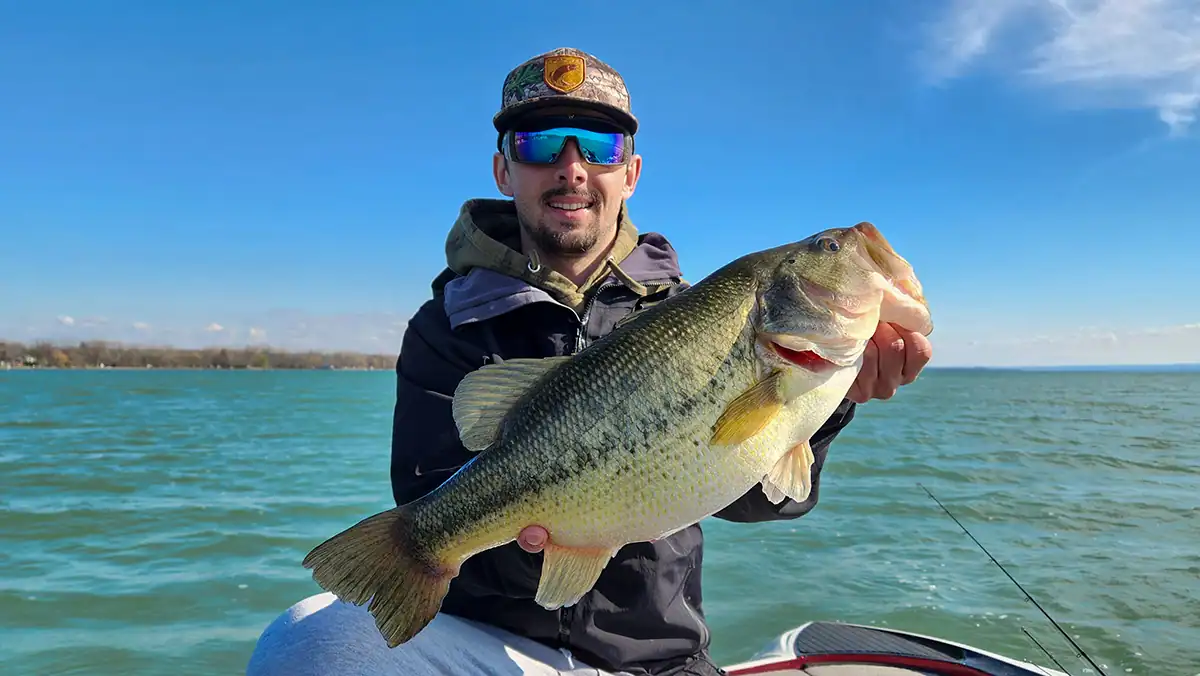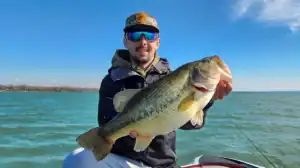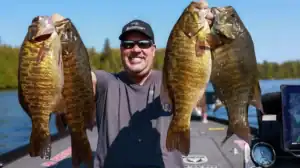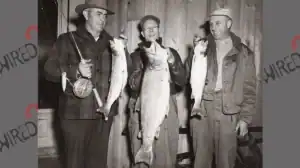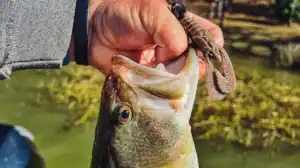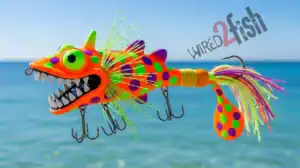It’s no secret in the world of bass fishing that big fish eat big baits. It’s also true that big fish eat smaller fish. Have you ever caught a nice bass on a crappie jig? That’s why there are so many size, shape and color patterns across thousands of different baits on the market today. Finding out what the bass are eating and matching the hatch is one of the most crucial elements in catching more and bigger bass.
When you throw in weather, water level fluctuations and fishing pressure, it can turn those biting fish into temperamental lockjaws. They just might not want to eat anything! When this occurs, most anglers think to throw the kitchen sink at them, pulling out every lure in their tackle box. And sometimes it just doesn’t do the trick.
Intuitive anglers think outside the box and either go super big with their baits or downsize to an ultra-finesse presentation. Each has its time and place, but both are super effective for pulling bites when times are tough. The bites may not be plentiful, but they will definitely be large.
When You Need to Go Big
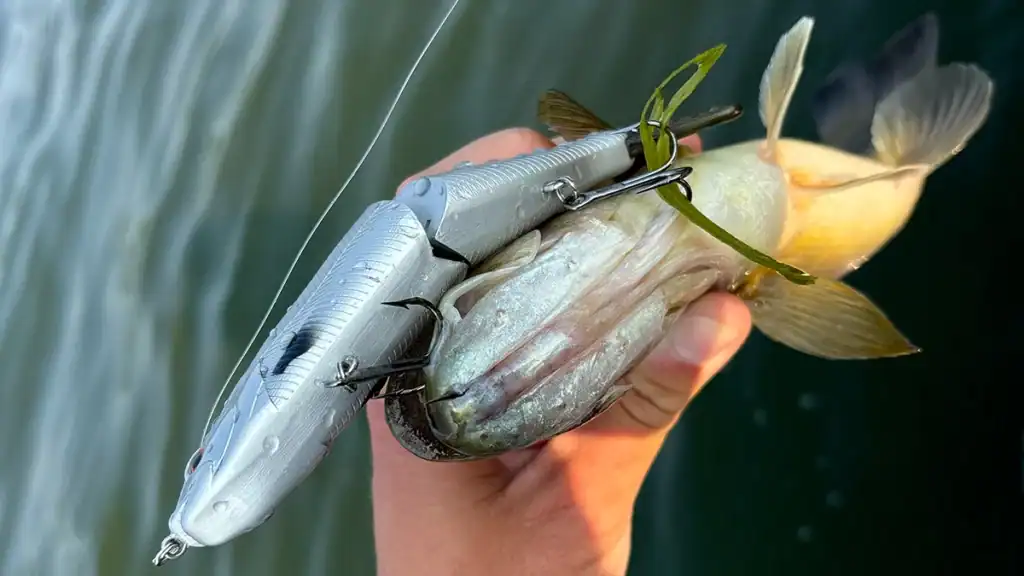
Do you ever watch your graph, live scope or even your lure as it’s coming toward the boat and notice fish reacting but not committing? Ever think you’re swimming a bait directly next to a fish and they don’t notice? These are times I think we’ve all experienced on the water. We make cast after cast and know that there’s a fish sitting at a certain spot, but nothing seems to make them eat. This is where big baits come into play.
When I talk about big baits, I’m talking about big swimbaits. Glide baits, Magdraft-style rigged swimbaits, and large hard bodies fit the bill. Something that has a big and loud presence that fish truly can’t resist. Big baits have legitimate drawing power. What I mean by that is having a big presence in the water that the bait stands out, drawing curious or lazy bass into biting.
The best way I can compare it is if you are a waterfowl hunter and hunt a lot of late-season ducks and geese. When those birds are beat up from hunting pressure, sometimes having a large decoy spread creates a big presence and will draw in birds from the heavens. No calls, no motion — just a mass of numbers to draw in birds. The same could be true for drawing big largemouths, by producing a large presence in the water column.
I’m not calling waterfowl in the late season. Comparably, large baits with no rattles will help get pressured fish to bite. While bass often use all of their senses to feed, sight will always be number one. Regardless of the type of strike, a bass still has to see the bait to eat it. That’s why having big baits that stand out are important. You could match the hatch, but making a bold gamble also makes a huge difference. That’s why many swimbaits on the market come in bone white and solid black colors — to stand out from the rest.
Micro Baits for Monster Bass
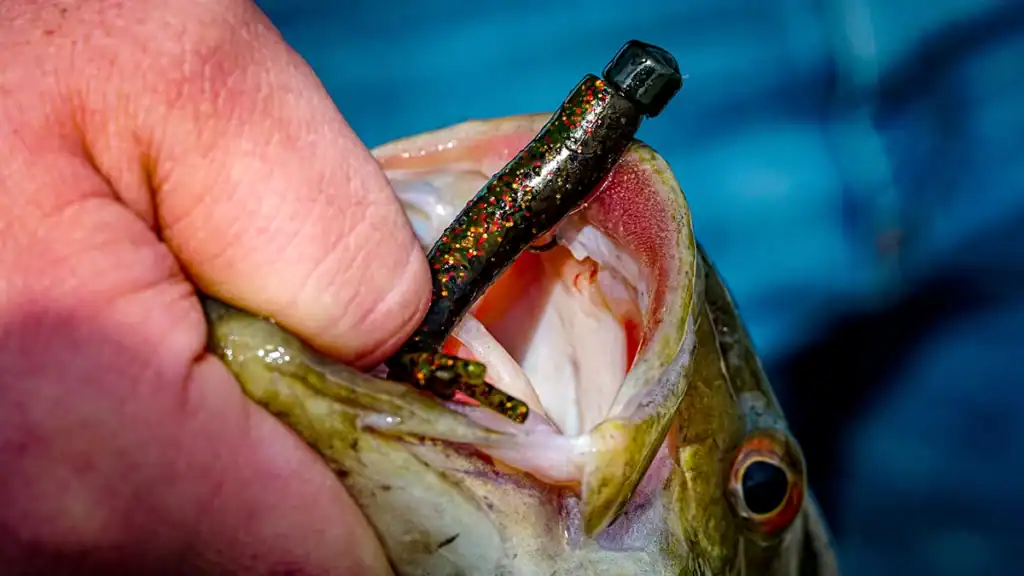
While the bigger baits work wonders for drawing bites from bigger fish, many anglers often overlook the other side — micro finesse baits. In pressured bass lakes, sometimes downsizing your tackle can make all the difference in getting a bite. You may think small baits are just for crappies and other panfish, but they play a leading role in getting finicky fish to bite.
When I first got into bass fishing, I was surrounded by many small pressured city ponds in parks that got hammered by fishermen. That is where I met some Japanese anglers who are now lifelong friends. When I first met them, it looked like they were fishing for panfish, but in reality they were targeting pressured largemouth. Micro baits, four-pound test, ultralight spinning, and BFS casting gear — it was odd for a 15-year-old kid to see that and think big bass.
Their theory was this: Where they came from in Japan, the bass fishing culture was huge, but largemouth bass were considered invasive. Since all bass have to be killed, there are fewer of them in the lakes each year making for tougher fishing. Downsizing their presentations to panfish-size baits resulted in catching many fish pushing the five-pound mark, which was extremely impressive for their 10-acre lakes. It was at that moment, I became enthralled with light spinning gear and finesse fishing.
Fast forward to today, I don’t leave the house without my panfish gear in the lockers of my boat. While many baits on the market today have flashy blades, thumping tails and intense rattles, this could turn bass off from feeding. Downsizing your baits to something small mimics more of the natural forage that most bass are used to eating. Things like freshwater shrimp, smaller minnows, smaller crayfish, helgramites and even large zooplankton. Matching the hatch down to the microorganism can mean the difference in a few extra bites throughout the day.
Our Top Picks
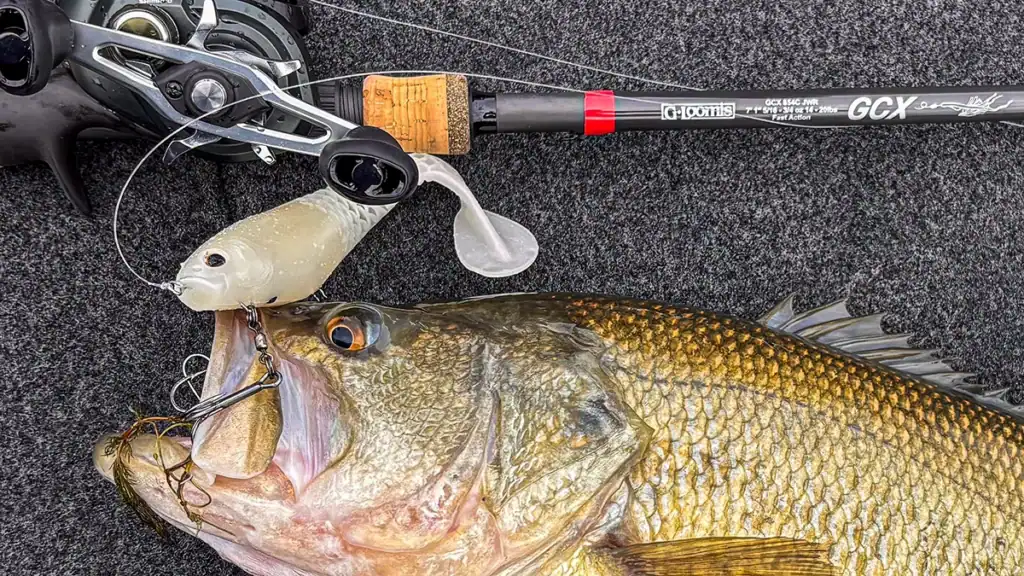
If we are choosing sides here, I’ll go finesse all the way for a majority of my fishing. Downsizing my tackle, especially here in the Finger Lakes region makes sense. The water is super clear and we experience sporadic weather conditions, so I’ve noticed downsizing leads to better results for my clients and myself.
When the Great Lakes Finesse products were new to the market, I was all about them and they proved to catch big, pressured bass in our clear northern waters. Baits like the Snack Craw and Drop Minnow have become staples in my boat throughout the year for finesse fishing. Why? Because downsizing your baits, especially when targeting smallmouth, mimics more of the natural prey living in the ecosystem. Remember, some of these bass have seen the kitchen sink, so throwing something super small that they might not have seen could mean more bites.
I’m not saying that there isn’t a time and a place for big baits. They do have their time periods where they do shine, especially for shallow water largemouth during the post spawn and early summer period. Lets face it, largemouth during the post spawn can be some of the hardest to get to bite. That’s where big glide baits like a Spro KGB Chad Shad or a big soft bodied swimbait like a Berkley Cull Shad shine. These baits can be reeled in a variety of retrieves, but for me, a slow steady retrieve gets the most bites. Especially when I’m using a bone or white colored bait. To me, the bone color has the biggest drawing power out of any big bait. Mainly because it stands out in all water clarity conditions. You can see a big white bait coming from hundreds of feet away — and so can a bass.
There is no right or wrong when it comes to the opposite ends of the spectrum for baits. Both big and small baits have their time and place; it’s recognizing the situation on the water to determine what the fish will react to the most. Utilizing both techniques could get you bigger or more bites throughout the day. Shake things up the next time you’re out on the water.


